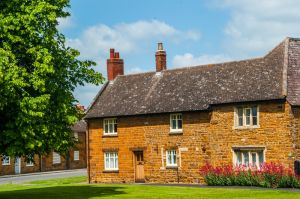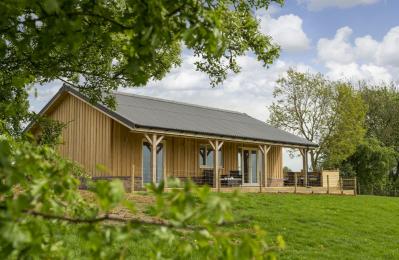
Unlike many traditional villages which are based around a green, Lyddington is stretched out in a linear fashion over the course of a mile. Most of the buildings are built of the lovely reddish limestone for which this area is known, giving the pretty cottages a real charm.
At the heart of the village is a small green, where the stub of a medieval preaching cross stands upon a modern base. Nearby is the parish church of St Andrew, which has several interesting features.
A pair of medieval carved grave slabs stand in the porch, while two medieval brasses are in front of the altar steps (hidden by carpet when I visited). The most unusual feature can be found in the chancel, where several good-sized holes high up on the walls show where a medieval bishop had stone jars installed.
The theory (unproven) was that the jars would act to improve the acoustics of the church. Beside the church stands Lyddington's premier historic attraction, the Bede House, which is all that is left of a medieval Bishop's Palace. The Bede House features a fabulously carved cornice in the first floor great chamber.
 We've 'tagged' this attraction information to help you find related historic attractions and learn more about major time periods mentioned.
We've 'tagged' this attraction information to help you find related historic attractions and learn more about major time periods mentioned.




